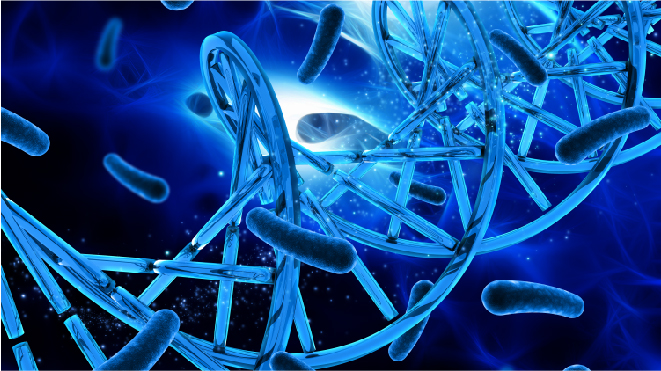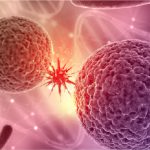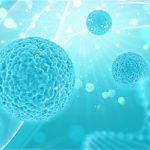What is Acute Myeloid Leukemia?
Acute Myeloid Leukemia, as evident from the name, is a type of leukemia. It is estimated to account for about of all the new blood cancer cases in 2018 with the total number of cases estimated to be around 19,500. It is a relatively rare disease with an incidence of about 4.3 cases per 100,000 people, based on data from 2011 to 2015.

The blood cells are produced in the hollow of the bone, in a soft gel like part called bone marrow. The cells produced are primitive ones called stem cells and these are pluripotent in nature. Meaning, they have the potential to develop into all types of blood cells. The process of the stem cells differentiating into different types is called hematopoiesis. The stem cells differentiate into two different cell groups- the myeloids and the lymphoids. The lymphoids are responsible for our immune system while myeloid group differentiate further to form red blood cells, white blood cells and platelets.
Leukemia, a type of blood cancer, is caused by rapid production of abnormal cells and the ability of the bone marrow to produce cells is impaired. The progression of leukemia is classified as acute or chronic. The acute type spreads very fast and requires immediate treatment whereas chronic spreads slowly and the treatment need not be immediate. Depending on the cell group affected and the progression of cancer, leukemia is of four main types:
- Acute Lymphocytic Leukemia (ALL)
- Acute Myelogenous Leukemia (AML)
- Chronic Lymphocytic Leukemia (CLL)
- Chronic Myelogenous Leukemia (CML)
What happens in Acute Myeloid Leukemia:
In AML, the myeloid cell group is affected. In the process of cell differentiation called hematopoiesis, the stem cell differentiates into myelogenous and lymphoid groups. These cells then develop into myeloblasts and lymphoblasts, the suffix blast representing cells still in formation. The blasts mature into cells with their functionalities and are then referred to with the suffix -cytes, myelocytes and lymphocytes. The myelocytes differentiate further to form megakaryocytes, erythrocytes, monocytes, neutrophils, basophils and eosinophils. The erythrocytes form red blood cells, megakaryocytes form platelets and the remaining others are white blood cells.
The myelogenous cells mutate and form leukemic blasts which do not function as normal cells and so cannot produce normal healthy cells. Thus in acute myeloid leukemia, the production of red blood cells, platelets and the white blood cells is affected.
Risk factors:
AML is known to develop due to abnormalities in DNA and the exact causes of this mutation is not confirmed though some risk factors are known. The risk factors are the conditions that suggest higher probabilities for a certain disease. The following are the risk factors for AML:
- Smoking while definitely causes more damage to the lungs and so is a major risk factor for lung cancer, it also allows the nicotine into the bloodstream that increases the chance of AML too.
- Exposure to chemicals such as benzene and formaldehyde is also a known risk factor.
- Certain chemotherapy drugs have lasting side effects that can cause mutation of blood cells.
- Conditions such as MDS can escalate into AML.
- Alkylating agents such as cyclophosphamide, mechlorethamine, procarbazine etc.
- Exposure to radiation such as X ray or radioactive material or prior radiation therapy also increases the chances of developing this cancer..
- Chronic myeloproliferative disorders such as polycythemia vera, essential thrombocythemia, and idiopathic myelofibrosis can also cause AML.
- AML in the family history also increases the risk of AML in the patient.
- Genetic syndromes such as Down’s, Diamond-Blackfan anemia, Schwachman-Diamond syndrome, Li-Fraumeni syndrome etc also increases the risk of AML.
Symptoms:
The symptoms of AML resemble that of a flu in early stages, so unexplained and long lasting flu like symptoms should be checked by a specialist. The common symptoms of AML are:
- bone pain
- frequent nosebleeds
- bleeding and swollen gums
- easy bruising
- excessive sweating (particularly at night)
- shortness of breath
- unexplained weight loss
- heavier than normal periods in women
Types of AML:
The subtype of AML is done using a cellular system. Using the FAB (French-American-British) system, AML is classified into 8 types. This system is also used to stage acute myeloid leukemia. The classification is based on the stage of hematopoiesis that AML develops in and the type of myeloid cells affected by cancer.
- M0- Undifferentiated AML
- M1- Myeloblastic leukemia
- M2- Myeloblastic leukemia
- M3- Promyelocytic leukemia
- M4- Myelomonocytic leukemia
- M5- Monocytic leukemia
- M6- Erythroleukemia
- M7- Megakaryoblastic leukemia
Diagnosis:
The following tests may indicate the presence of acute myeloid leukemia.
- Blood tests: Complete blood test can show high volumes of myeloblasts (incompletely formed myeloid cells), affected white blood cells and lower numbers of red blood cells and platelets.
- Bone marrow test: Bone marrow biopsy or aspiration (removing the bone marrow sample by a thin needle) can reveal the presence of cancerous cells in the bone marrow and also which type of AML it is depending on the type of cells affected and their stage of differentiation.
Treatment:
The treatment for AML is carried out in two phases and the method of treatment depends on factors such as the subtype of AML, the spreading of cancer, the test results, patient’s response to different treatments etc.
- Remission Induction therapy: As the name suggests, this phase aims to achieve remission of the cancer, a stage where the patient no longer shows symptoms of cancer. This is usually achieved by chemotherapy, though in some rare forms of AML, anti cancer drugs need to be used too.
- Consolidation therapy: Consolidation therapy or post remission therapy aims to destroy the remaining leukemic cells in the body and restart the production of healthy blood cells, by bone marrow transplantation if required.]
Survival rates:
The survival rate usually refers to the five year survival rate, meaning how many people live beyond 5 years of diagnosis out of every 100 patients diagnosed with cancer. The overall survival rate of AML is 27.4% for the years 2008-2014, it is very low because people above 60 years do not respond well to treatment. In younger age groups, 70 to 80 patients reach remission after induction phase and for this group, the survival rate is around 65%.



